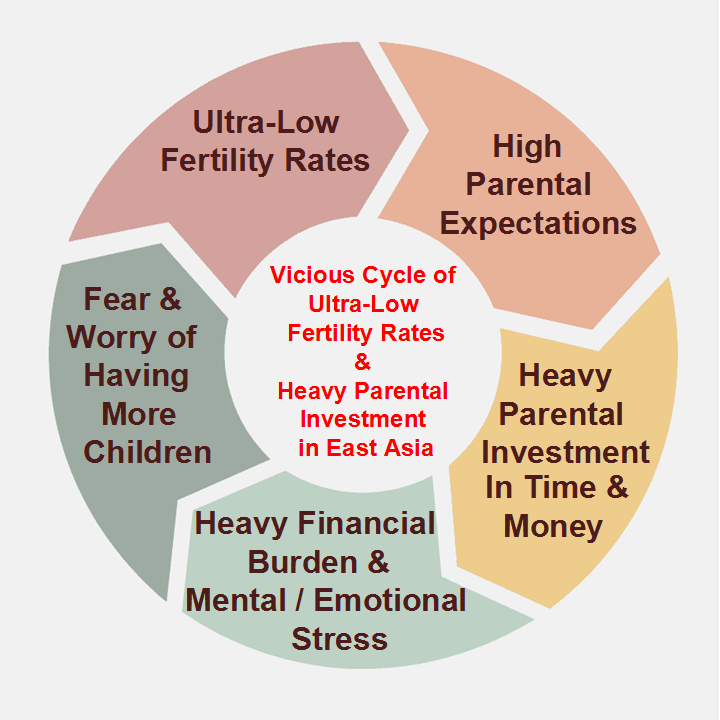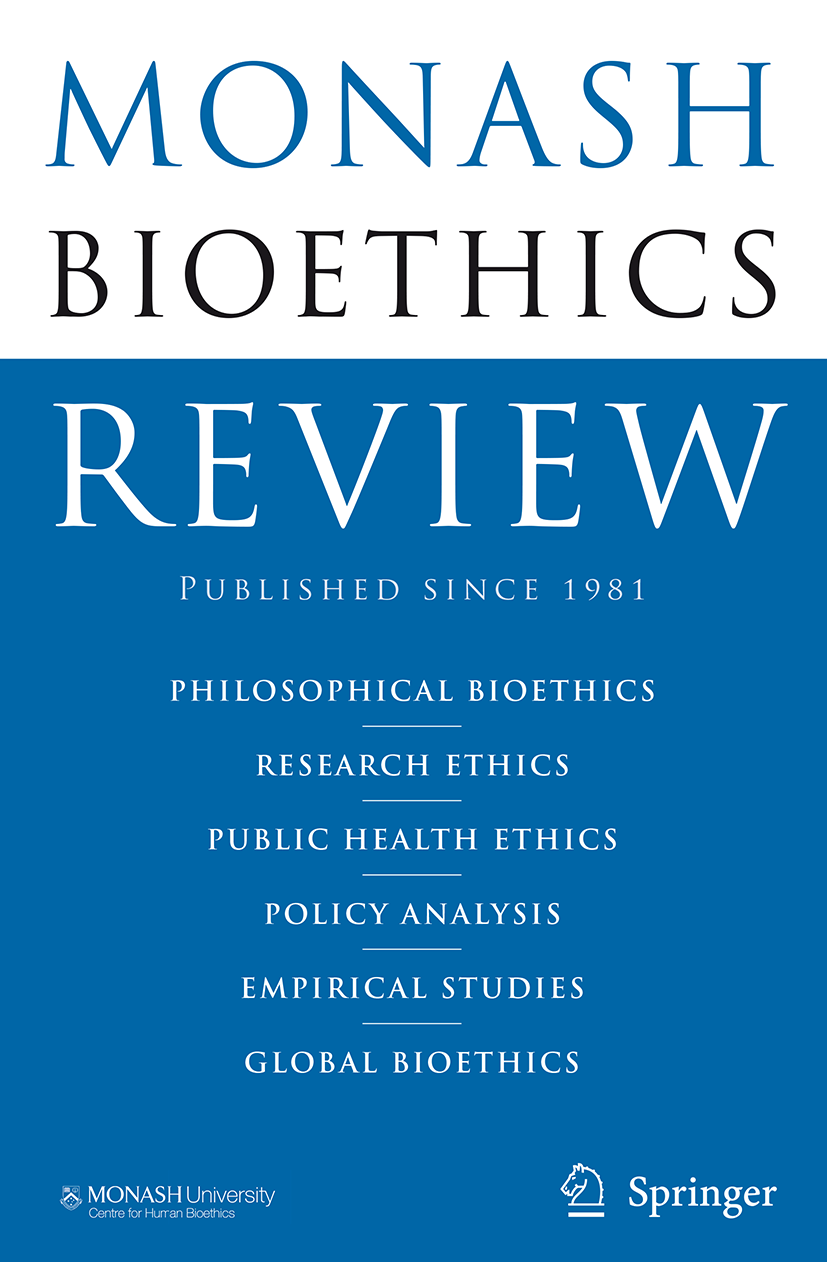Confugenics - the East Asian Iteration of Consumer Eugenics Spells Demographic Disaster
Published in Healthcare & Nursing, Social Sciences, and Neuroscience

Please also read the related article in "The Japan Times":
‘Confugenics’ and East Asia's demographic crisis
The educational landscape in East Asia is highly competitive, characterized by intense stress on both children and parents, heavy spending on private tuition, and rampant practice of “tiger parenting”. High school students have to undertake extremely grueling high-stakes college entrance examinations, such as the Gaokao in China or Suneung in South Korea. These determine their eligibility to enter different tiers of higher education institutions, with prestigious research-intensive universities ranked at the highest tier and vocational/technical institutes at the lowest. Such contemporary examinations are modern iterations of the historical imperial examinations that originated in ancient China, serving as a route to a successful career, financial stability, and a good marriage.
Due to such an intensive academic rat race, the development of new technology platforms for human cognitive enhancement and consumer eugenics may find a lucrative niche market in East Asia. These include gene editing, polygenic testing for selecting IVF embryos with the best health and intelligence potential, and brain chip implants for cognitive enhancement. Many parents are likely to invest in these innovative technologies that could be an expedient solution to a highly competitive educational system. It is argued that treating eugenics as a consumer right in a liberal free market capitalist system would avoid the cruelty of "old-fashioned" eugenics and the capriciousness of natural selection in advancing the human race. Instead of selectively restricting and eliminating people, new reprogenetic technologies enable the selection of "good genes" and elimination of "bad genes" based on personal reproductive choices, in what is commonly referred to as "consumer eugenics". A new terminology - “Confugenics” is thus proposed to describe the prospective intersection of such emerging human enhancement and reprogenetic technologies with the fixation on academic achievements and social status shaped by hyper-competitive social norms within East Asian societies.
In anticipation of a lucrative market, it is expected that these technologies will be priced at a premium upon their initial debut, making them accessible primarily to the wealthy. Furthermore, companies engaged in the development of these products and services will be under considerable pressure from their shareholders to recover the substantial investments made in research and development over the years, while also being driven to maximize profits from their exclusive patent rights and the high demand for these groundbreaking products upon their initial appearance in the marketplace. Nevertheless, it can be posited that while the initial costs of such emerging technologies may be high when they first debut, substantial demand together with further technological advances can drive companies to improve their safety, production efficiency, and cost-effectiveness, ultimately reducing per-unit expenses through mass production and consumption, a phenomenon known as "economy-of-scale."
In this context, one might envision a scenario in which the potential for enhancing children could render larger families more attractive to couples in East Asia. Instead of investing considerable time and resources in the education and training of a single child, parents might choose to utilize brain chip implants, gene editing, and the selection of optimal embryos through genetic testing from the beginning. This strategy would allow them to have several children (three, four, five, or more) with the confidence that they would not need to invest as much time in their upbringing, as the initial enhancements would reduce uncertainties. Although education and training would remain important, the overall burden would be lessened, given that the children would be inclined to possess certain abilities and talents.
Nevertheless, a significant flaw in this argument lies in the inherent limitations on how much the prices of emerging technologies can be reduced through economy-of-scale manufacturing. In the case of electronic devices such as smartphones and tablets, mass production has indeed slashed per-unit manufacturing costs through economies of scale. However, this will not apply to new medical technologies that require customized patient care and labor-intensive surgical and laboratory procedures. Consider the example of dental implants, a mature technology platform that has already been around for the past few decades. While large-scale production can indeed lower the per-unit manufacturing costs through economies of scale, the associated medical fees for individual consultations and surgical procedures performed by highly qualified dental surgeons will always be substantial. Consequently, the costs of dental implants will always remain high due to the labor-intensive nature of dental surgery procedures that require well-trained and skilled professionals.
Similarly, while the expenses related to the chemical reagents required for polygenic embryo screening and gene editing may decrease with mass production, the labor-intensive nature of these technologies ensures that they will remain costly. This is due to the complex laboratory and surgical procedures involved in human clinical assisted reproduction, which must be conducted by qualified and experienced professionals. The same principle applies to brain chip implants aimed at cognitive enhancement, which necessitate the expertise of a highly skilled neurosurgeon. Therefore, it is expected that the costs associated with such human enhancement technologies will always remain high, placing a heavy financial burden on prospective parents. State subsidies are neither financially viable nor politically acceptable. It is anticipated that there will be a lack of political will for governments and health authorities worldwide to subsidize such human enhancement technologies, not only because of their high costs but also because such new medical technologies are non-essential for the preservation of life or health. Hence, many East Asian couples who originally desired to have two or more children may eventually settle for having just one ‘superior cognitively enhanced’ child due to the high costs, thus accelerating the region’s demographic decline.
Furthermore, another flaw in this argument is the potential emergence of a highly imbalanced job market resulting from an oversupply of "academically overqualified" cognitively-enhanced individuals if these technologies become widely adopted. Based on the "Red Queen" effect, offspring with cognitive enhancements are expected to invest more effort to maintain their relative social or academic standing among peers who have received similar enhancements. Such a scenario is likely to lead to widespread youth unemployment or underemployment, which could spark much political discontent and destabilize society, concurrently resulting in a significant deficit of much-needed blue-collar workers possessing necessary vocational and technical skills. The latter issue is unlikely to be resolved through mass immigration, given the limited acceptance of multiculturalism in predominantly homogeneous East Asian societies.
Hence, governments and health authorities in East Asia should think twice before permitting the widespread uptake of such new human enhancement and reprogenetic technologies in their respective national jurisdictions, given the potential negative social ramifications, particularly accelerating the ongoing demographic crisis.
Follow the Topic
-
Monash Bioethics Review

This journal provides comprehensive coverage of traditional topics and emerging issues in bioethics and is especially concerned with empirically-informed philosophical bioethical analysis with policy relevance.
Related Collections
With Collections, you can get published faster and increase your visibility.
Ethical, Practical and Systemic Challenges Facing Children with Complex Chronic Conditions: A Global Health Perspective
Publishing Model: Hybrid
Deadline: Dec 31, 2025
Migration Health Ethics
Publishing Model: Hybrid
Deadline: Dec 31, 2026




Please sign in or register for FREE
If you are a registered user on Research Communities by Springer Nature, please sign in